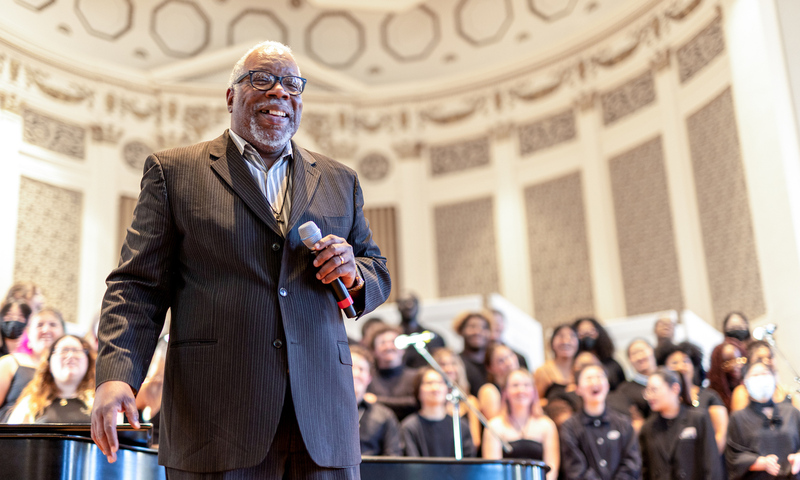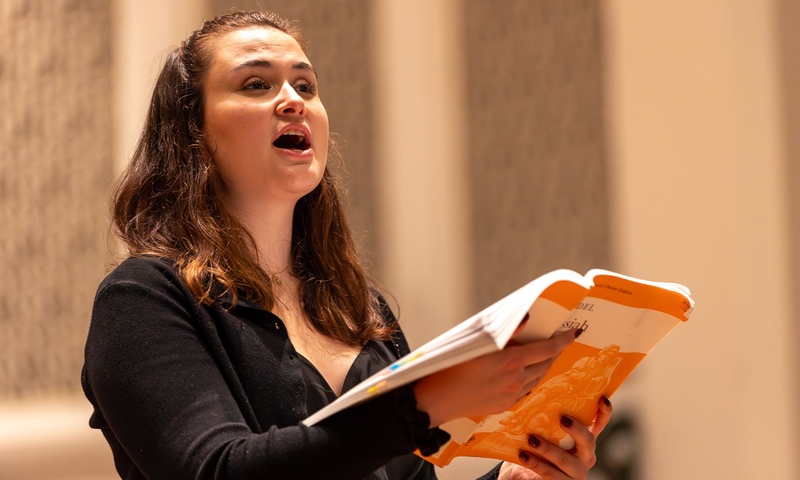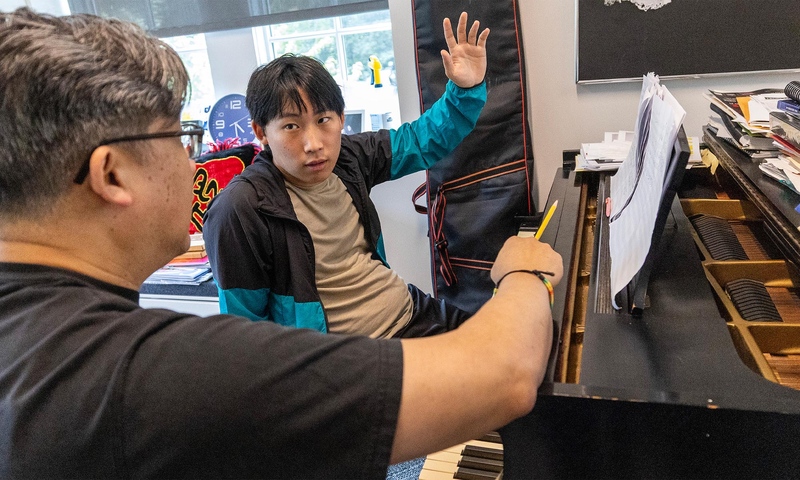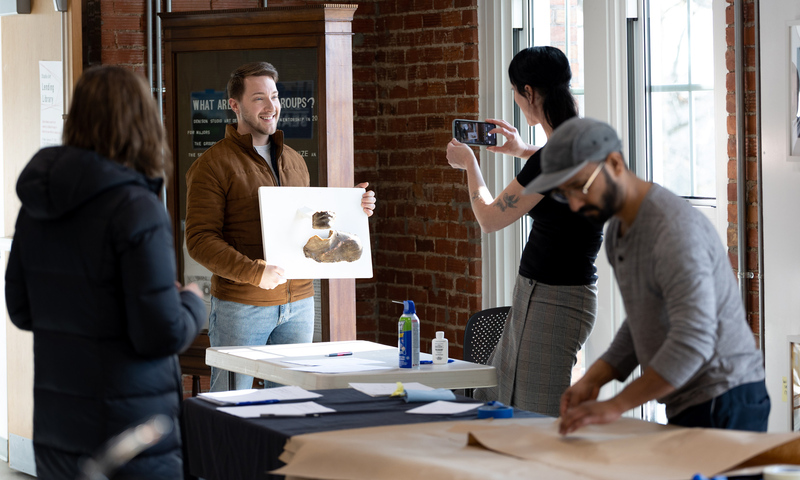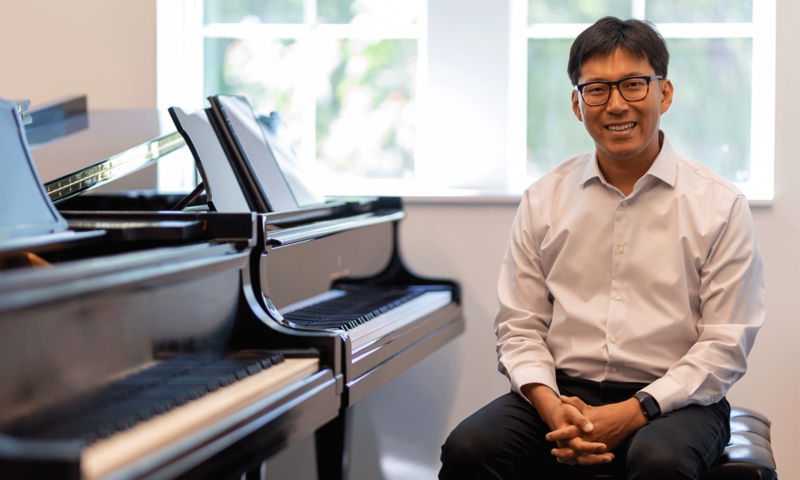Not many know that Denison is home to a unique collection of hundreds of historical fashion garments from the 1830s through the 1970s.
The collection recently has been organized and digitized, which allows online access not only to students and faculty, but to anyone around the world who would like to see it or to use it for their research. Highlights of the collection include two “day dresses” from the 1830s and 1840s, dresses and velvet capes from the 1890s, and beaded and fringed dresses from the 1930s. One of the most interesting fabrics is a 1967 mini-dress designed by Emilio Pucci, of silk jersey fabric.
Cynthia Turnbull, an associate professor of theatre, oversees the collection. When she first arrived at Denison, the clothing was stored in a metal cabinet. She noticed dresses from the 1840s and the 1850s in the pile and carefully set them aside. She hoped to better organize the entire collection but lacked time or resources.
In 2009, she became friends with Laresse Hall, a former fine arts liaison librarian at Denison who is now the arts and architecture librarian at University of North Carolina Charlotte. After taking a tour of the theatre building, Hall was captivated by the clothing from various historic periods.
“It made me think about the value of these objects and the limitations for sharing them when they were available to view only in the physical domain,” Hall said. “It was an ideal collection to share with a larger audience while also providing a way for students to use the collection as a learning tool.”
In 2010, Hall told Turnbull about grant opportunities that could help her receive funding to organize the costume collection. They applied and received a generous grant from the Andrew W. Mellon Foundation.
With the grant they hired Julie Melrose ’11 of Wooster, Ohio, to help and it became the perfect trio: Melrose knew the software; Hall knew how to categorize and organize things, and Turnbull knew and understood the historic periods and could date the clothes, and she also knew enough about historic clothing and designers to be able to determine which garments might be the most valuable–for study and dating.
The summer of 2010, the three set to work. Everyone had a lot of responsibilities. “I had to categorize the garments, make labels containing the date, description, and picture, write detailed descriptions, and get measurements,” Melrose said.
Going through the costumes was quite a reality check for Turnbull. “I thought we had maybe a hundred garments. We actually had over a thousand. The downstairs classroom in Ace Morgan was full of clothes,” she said. “It was difficult to determine what was worth saving and what wasn’t–since all historic garments are interesting and have some value.” But some were not in good shape, were duplicates, had mold, or holes, or so many tears that they didn’t even resemble a garment. They narrowed the collection down to less than 400.
The next summer, in 2011, the project continued. Melrose and Yue Nakayama ’12 photographed the clothes in more detail by putting them on mannequin to show the shape of the garment. “It is important to pad the garment,” Turnbull said, “so the accurate shape of the clothing is seen in the photos. The silhouette of the garments changes in the different historic periods—so seeing the true shapes of the garments is a very important part of documentation.”
The photos were taken from all sides, including the details of the fabric and trim. The result is online access to a close representation of the actual garment.
Turnbull has used the collection to aid her in teaching various courses, including History of Fashion, 20th Century Fashion, and Costume Design. “The collection can be an important primary source for students designing or constructing costumes for the stage,” Turnbull said. “By looking at an actual garment from 1930, the fabric, trim, and cut can be understood so that costume for the stage can accurately represent the historic period. This is a research and study collection.”
For one class project, each student in Turnbull’s class selected a 20th century garment to research, photograph, date, and describe. To do this, students examined the detailing, fabric, and silhouette of the garment. Then they conducted research of primary source material, like fashion magazines, for similar garments. Students were able to date the garment within a range of years, say 1962 to 1965, and determine its probable use and social context.
The fashion history collection is rarely used on stage because the pieces are so delicate. Compared to the entire Theatre Department Stage Costume Collection, which is used for theatre productions and takes up multiple rooms, the fashion history collection is a mere two racks. However, in this year’s production of A Streetcar Named Desire, some of the prop dresses in Blanche’s trunk came from the fashion history collection.
The digital fashion history collection is currently available in the Denison University Digital Resource Commons.

